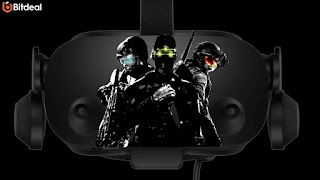The Evolution of Metaverse Games: From Early Stages to the Current State
Introduction
In recent years, the concept of the metaverse has captured the imagination of both developers and players alike. Metaverse games, which are immersive virtual worlds that enable users to interact with each other and the environment, have evolved significantly from their early stages to their current state. This blog explores the fascinating journey of metaverse game development, tracing its roots and highlighting key milestones along the way.
The Emergence of Metaverse Games
Metaverse games draw inspiration from a variety of sources, including science fiction literature, virtual reality, and online multiplayer games. The idea of a shared virtual space where players can engage with each other and the digital environment has been a long-standing vision.
Early Metaverse Games
In the early stages of metaverse game development, pioneers like Second Life (2003) and Habbo Hotel (2000) paved the way. These games allowed players to create avatars, explore virtual worlds, and interact with other users in real time. Though limited in their graphical capabilities and gameplay mechanics, they laid the foundation for the future development of more advanced metaverse games.
Technological Advancements
Advancements in technology played a pivotal role in shaping the evolution of metaverse games. The advent of powerful gaming engines such as Unity and Unreal Engine enabled developers to create more visually stunning and immersive virtual worlds. Additionally, the rise of augmented reality (AR) and virtual reality (VR) technologies added new dimensions to the metaverse experience.
Expansion of Social Interactions
One of the defining features of metaverse games is the emphasis on social interactions. Developers recognized the importance of creating engaging and dynamic social systems within these virtual worlds. From chat systems and player-driven economies to guilds and multiplayer quests, metaverse games evolved to foster collaborative and interactive experiences.
Integration of Blockchain and NFTs
The integration of blockchain technology and nonfungible tokens (NFTs) has been a recent breakthrough in metaverse game development. Blockchain provides secure and transparent transactions, while NFTs allow for unique and verifiable digital assets. This innovation has opened up new possibilities for ownership, trading, and customization within metaverse games.
Rise of Cross-Platform Connectivity
Metaverse games have increasingly embraced cross-platform connectivity, allowing players to interact regardless of their chosen devices or platforms. Whether on PCs, consoles, or mobile devices, players can now seamlessly connect and explore shared virtual worlds, expanding the player base and fostering a more inclusive and connected metaverse experience.
The Emergence of Persistent and User-Created Worlds
Metaverse games have evolved from static environments to persistent and user-created worlds. These virtual spaces dynamically change and evolve over time, driven by player actions and developer updates. User-generated content (UGC) tools have empowered players to shape the metaverse by creating and sharing their own virtual assets, levels, and experiences.
E-Sports and Competitive Metaverse Gaming
The competitive aspect of metaverse games has gained significant traction. E-sports tournaments and events in the metaverse have become increasingly popular, with players competing for fame, recognition, and lucrative prizes. This competitive ecosystem has led to the rise of professional metaverse gamers and dedicated spectator communities.
Integration of Real-World Elements
Metaverse games have started to incorporate real-world elements, blurring the lines between the virtual and physical realms. Examples include location-based AR experiences that overlay virtual content onto the real world, as well as integration with IoT devices, wearables, and other emerging technologies. These integrations enhance immersion and provide unique gameplay opportunities.
Conclusion
The evolution of metaverse games from their early stages to the current state showcases the remarkable progress made in the realm of virtual worlds and shared online experiences. Metaverse game development has seen significant advancements in technology, social interactions, blockchain integration, cross-platform connectivity, user-generated content, and competitive gaming. As the metaverse continues to expand and mature, it promises to revolutionize the way we play, interact, and connect in virtual spaces. Exciting times lie ahead as developers and players together shape the future of metaverse game development.




Comments
Post a Comment